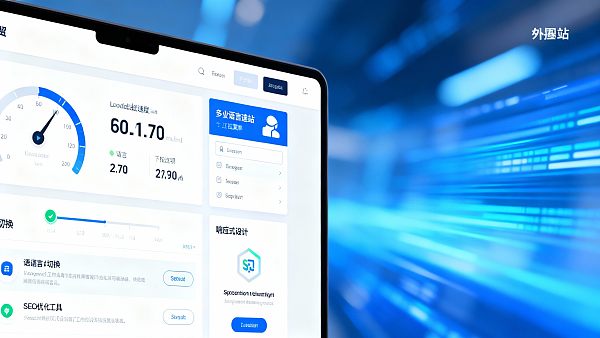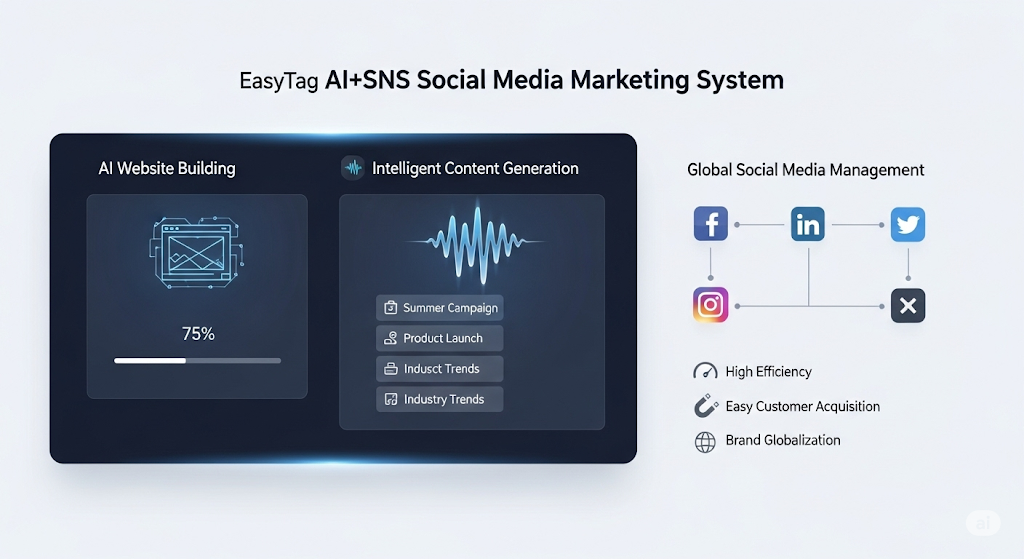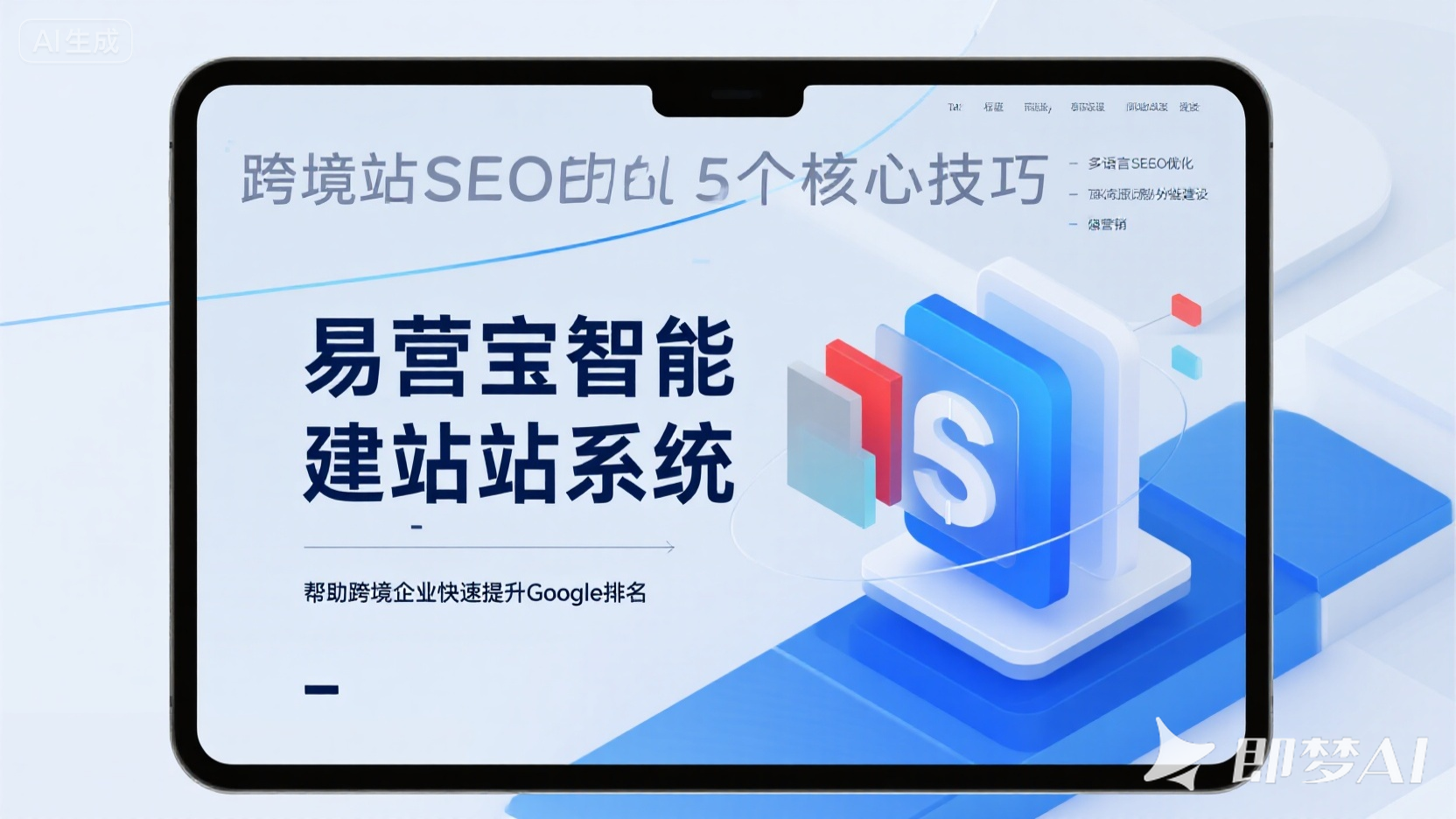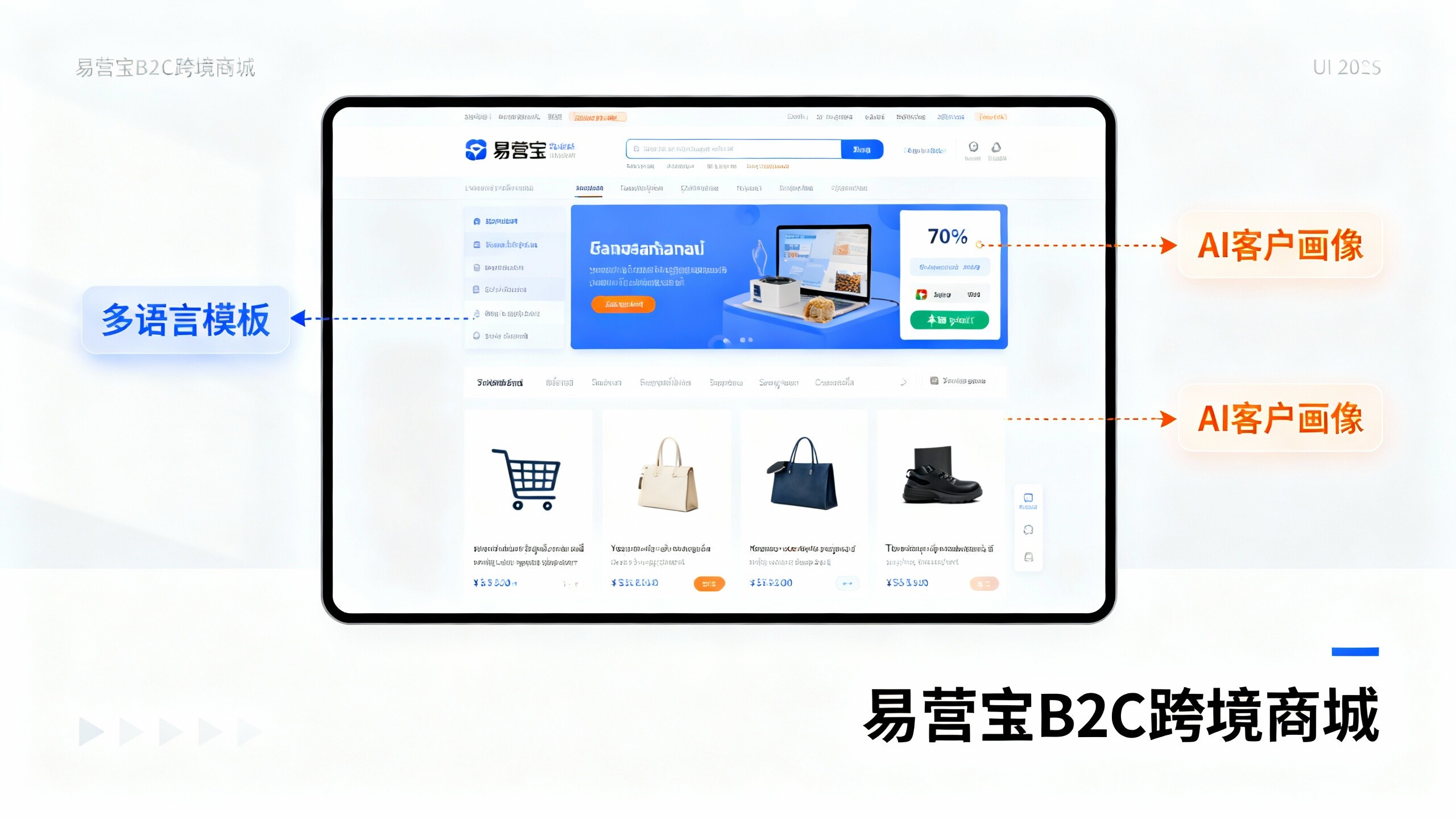Easy Camp Cloud Intelligent Website Construction and Marketing System Platform!
- White Paper on 2025 Smart Website Construction Industry Trends2025-11-19View Details
- How can geo-targeted website solutions precisely reach overseas target markets?2025-11-20View Details
- Enterprise Multilingual CMS vs. Regular Website Building Tools: What's the Difference?2025-11-20View Details
- Facebook ad budget overspending? Here are 4 methods to help you control costs2025-11-20View Details
- Which foreign trade marketing system is the strongest? A breakdown of real cases from Yibao SaaS platform2025-11-20View Details
- Comparison of Foreign Trade Independent Station SaaS Platforms: How Did EasyShop Increase 100+ Users Monthly?2025-11-20View Details
- What are the geo-targeted website solutions? 3 successful market entry case studies2025-11-19View Details
- Why do 90% of cross-border marketing teams choose AI multilingual website systems? Real data reveals the secret2025-11-18View Details
5 Common Pitfalls in Chinese Foreign Trade Website Construction – Have You Fallen for Them?
Introduction
For Chinese enterprises expanding into overseas markets, building a foreign trade independent website is a crucial step, but many companies often fall into common pitfalls. From the localization and adaptation of multilingual websites to the content optimization of B2B foreign trade marketing websites, these common mistakes can directly impact overseas lead acquisition effectiveness. This article reveals five typical foreign trade website construction mistakes in China, helping you avoid minefields and create a truly high-converting foreign trade website solution.

Mistake 1: Overlooking Multilingual Localization, Simply Translating Content
Many companies believe that mechanically translating Chinese content into English completes localization, unaware that cultural differences may lead to misunderstandings. For example, a machinery manufacturer directly translated "fist product" as "fist product," causing confusion among overseas clients. Truly effective multilingual website construction requires:
- Professional terminology localization: Industry-specific vocabulary must align with target market habits
- Cultural adaptation: Avoid using religious or politically sensitive elements
- Unit conversion: Such as inches vs. millimeters, currency symbols, etc.
- Legal compliance: GDPR privacy policies, cookie declarations, etc.
Using the EasyTrade Super Website AI-powered translation engine can automatically identify and process localization expressions in 98 languages while supporting manual proofreading to ensure content is both professional and natural.
Mistake 2: Server Deployment Without Considering Geographic Location
Concentrating servers domestically is a common error. Test data shows that when website load times exceed 3 seconds, 53% of users will leave immediately. Solutions should include:
Global distributed server clusters can effectively solve this issue. For example, a cross-border e-commerce company using a CDN network covering 2,500+ nodes saw Brazilian user access speeds increase by 60% and conversion rates rise by 22%.
Mistake 3: Superficial Mobile Adaptation
Statistics indicate that 63% of global foreign trade inquiries come from mobile devices, but many websites suffer from:
- Uncompressed images causing slow loading
- Form fields difficult to operate via touch
- Popup windows blocking main content
- Failure to optimize layouts for different screen sizes
True responsive design should achieve: real-time content synchronization between PC and mobile sites, automatic device type recognition with adjusted interaction modes, and key CTAs always remaining within thumb-friendly zones. This requires professional enterprise-grade self-service website systems providing technical support.
Mistake 4: SEO Optimization Stops at Basic Levels

4.1 Ignoring Multilingual SEO Structures
Quality foreign trade independent website solutions should include: separate URL multilingual structures (e.g., /en/page, /es/pagina), hreflang tag annotations, and localized meta tag optimization. A tool manufacturer optimized its French site's SEO structure, resulting in 300% organic traffic growth on Google.fr.
4.2 Insufficient Content Update Frequency
Search engines favor active websites. Recommendations:
- Publish 1-2 industry technical articles weekly
- Regularly update product case libraries
- Maintain multilingual blog sections
Mistake 5: Lack of Data-Driven Continuous Optimization
Website completion is just the beginning; continuous monitoring is needed:
- Traffic quality analysis: Identify high-value customer acquisition channels
- Heatmap tracking: Optimize page element layouts
- Conversion leakage diagnosis: Reduce key step drop-off rates
A B2B wholesaler discovered through data analysis that adding product videos increased inquiry rates by 40%, prompting comprehensive visual upgrades for key products.

Conclusion and Actionable Recommendations
Avoiding these five mistakes will ensure your foreign trade website delivers: global high-speed access experience, professional localized presentation, search-engine-friendly structure, and a data foundation for continuous optimization. For enterprises seeking all-in-one solutions, EasyTrade Super Website provides full-chain services from AI-powered construction to marketing closure, with 99.99% high-availability architecture and full-stack SEO systems already helping over 100,000 enterprises succeed globally.
Get your exclusive website solution now, helping your global multilingual website project win from the starting line!
- Foreign Trade Website
- Mobile Compatibility
- Responsive Design
- Construction of independent foreign trade websites
- B2B Foreign Trade
- Independent website construction
- Easy Treasure
- SEO
- Independent site
- SEO optimization
- Multilingual SEO
- Foreign Trade Independent Website
- Foreign Trade Website Solutions
- Enterprise-grade self-service website system
- Foreign Trade Independent Website Construction Solution
- China Foreign Trade Website
- Global multilingual website construction
Related articles
 Use Eyingbao to build a cross-border e-commerce website, with real cases of doubling traffic in the first month
Use Eyingbao to build a cross-border e-commerce website, with real cases of doubling traffic in the first month Multilingual Foreign Trade Website System Selection Guide: 5 Pitfall Avoidance Recommendations for Quick Browsing
Multilingual Foreign Trade Website System Selection Guide: 5 Pitfall Avoidance Recommendations for Quick Browsing How to Set Up a Cross-Border E-commerce Website in 3 Steps with Eyingbao? A Must-Read for Business Decision Makers
How to Set Up a Cross-Border E-commerce Website in 3 Steps with Eyingbao? A Must-Read for Business Decision Makers
Related products
















